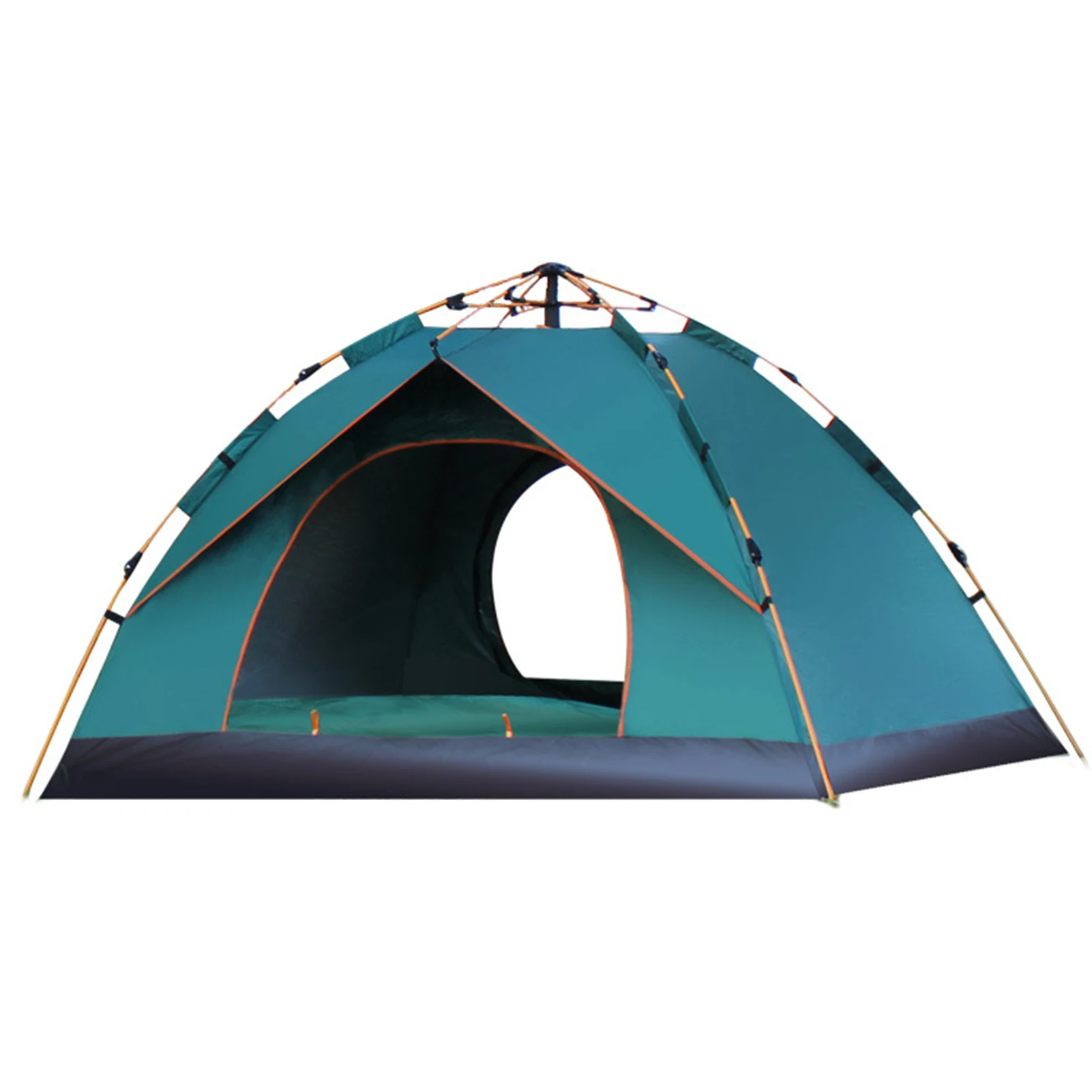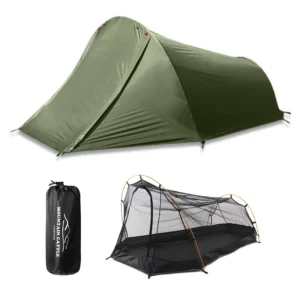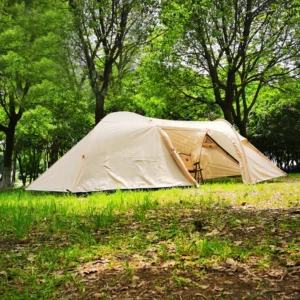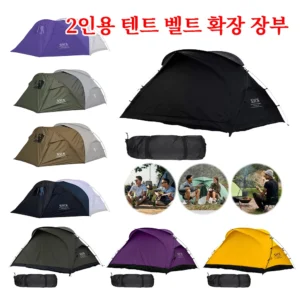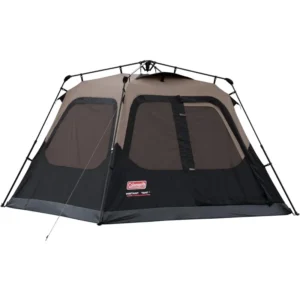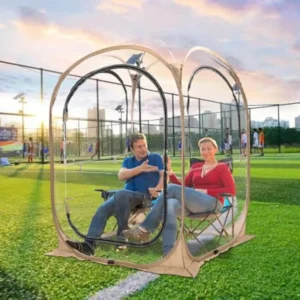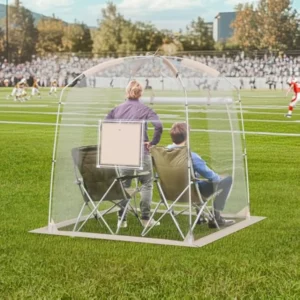Introduction to Quick Setup Tents: Revolutionizing the Camping Experience
The camping world has undergone a remarkable transformation with the introduction of quick setup tents. These innovative shelters have eliminated one of camping’s most frustrating challenges—spending precious outdoor time wrestling with poles, threading loops, and deciphering complicated instructions. Quick setup tents are designed with user-friendly mechanisms that dramatically reduce assembly time, allowing campers to focus more on enjoying nature and less on pitching camp.
This comprehensive guide aims to help you understand the various types of quick setup tents available, their unique benefits, and how to select the perfect option for your camping needs. Whether you’re a weekend warrior, family camper, or festival-goer, finding the right shelter can transform your outdoor experience.
The benefits of quick setup tents are substantial:
- Save valuable time at your campsite (setup in minutes versus 20+ minutes for traditional tents)
- Reduce frustration and physical strain, especially after a long journey
- Make camping more accessible for beginners, seniors, and solo travelers
- Provide versatility across various camping scenarios and weather conditions
- Simplify the entire camping process from arrival to departure
As the market for quick setup tents has grown by over 30% in recent years, manufacturers have responded with increasingly innovative designs. Throughout this guide, we’ll explore these advancements and help you navigate the options to find your perfect quick setup solution.
The Key Advantages of Quick Setup Tents: Why Choose One?
The appeal of quick setup tents extends far beyond mere convenience—they fundamentally change how we approach outdoor adventures. Here’s why these innovative shelters have become increasingly popular among campers of all experience levels:
Time Efficiency
Perhaps the most obvious benefit is the dramatic time savings. While traditional tents might require 15-20 minutes (or more) of careful assembly, most quick setup options can be ready in 1-5 minutes. Some pop-up designs literally spring into shape in seconds. This efficiency means:
- More time enjoying your destination rather than struggling with setup
- Ability to establish camp quickly if weather conditions suddenly change
- Less daylight wasted on camp logistics, especially during shorter autumn or winter days
Reduced Frustration and Physical Effort
The simplified setup process eliminates many common camping frustrations:
- No more missing or broken poles
- No confusing assembly instructions
- Reduced physical strain, particularly beneficial after a long hike or drive
- Lower likelihood of setup-related arguments (a real relationship-saver on family trips!)
Accessibility for All Skill Levels
Pop-up camping tents have democratized camping, making it more accessible to:
- First-time campers intimidated by traditional tent assembly
- Children who can now participate in the setup process
- Seniors or those with physical limitations
- Solo travelers who previously struggled with multi-person tent designs
Versatility Across Camping Scenarios
Quick setup tents have evolved to accommodate various camping styles:
- Festival camping where rapid setup/takedown between venues is crucial
- Family campgrounds where space and comfort are priorities
- Backpacking adventures where weight and packability matter
- Emergency shelter situations requiring immediate protection
When a sudden thunderstorm rolls in while you’re setting up camp, or when you arrive at your site after dark, the value of a quick setup tent becomes immediately apparent. These practical advantages make them worth considering for anyone looking to enhance their camping experience.
Understanding Quick Setup Tent Technologies and Designs
The remarkable convenience of modern quick setup tents stems from innovative engineering and materials science. Understanding the technology behind these designs helps you make a more informed choice when selecting your ideal camping shelter.
Pop-Up Tents: Spring-Loaded Freedom
Pop-up tents represent the fastest deployment option, using pre-tensioned, flexible frames that automatically expand when released from their carrying position. These tents utilize:
- Flexible fiberglass or steel coils that store potential energy when folded
- Specialized joint systems that allow the frame to collapse into a flat, circular shape
- Lightweight fabrics pre-attached to the frame structure
When released from their carrying case, these tents literally “pop” into shape in seconds—no assembly required. The technology originated from portable sun shelters but has evolved significantly for camping applications.
Instant/Cabin Tents: Hub-Based Efficiency
Instant cabin tents utilize a pre-attached pole system with central hubs or joints that allow the structure to fold and unfold as a single unit. Key design elements include:
- Telescoping poles that remain attached to the tent fabric
- Hub connectors positioned at critical junctures
- Pull-cord or lever mechanisms that lock the structure into place
These designs offer an excellent balance between setup speed (typically 1-3 minutes) and the stability/space of traditional cabin tents. They’ve become particularly popular for family camping where interior space is prioritized.
Inflatable/Air Tents: Pole-Free Innovation
The newest category in fast setup tent technology replaces rigid poles with inflatable air beams. These innovative designs feature:
- High-pressure air chambers made from robust, airtight materials
- Reinforced valve systems for inflation and pressure regulation
- Interconnected air beam networks that create rigid structural support
- Specialized pumps (often included) for quick inflation
The technology traces its origins to high-end expedition equipment and watersports but has been refined for mainstream camping use. Modern air tents offer exceptional stability, particularly in windy conditions, since the beams can flex without breaking.
Hybrid Designs: Combining Technologies
Some manufacturers have developed hybrid systems that combine elements from multiple quick setup categories:
- Partial pop-up sections with traditional pole segments
- Hub systems with inflatable extensions
- Modular designs that allow for configuration flexibility
These hybrid approaches often aim to address specific limitations in each technology category, creating specialized solutions for particular camping scenarios.
The evolution of these technologies continues to accelerate, with each new season bringing refinements in weight, durability, and setup speed. The result is an increasingly diverse range of options to match every camping style and environment.
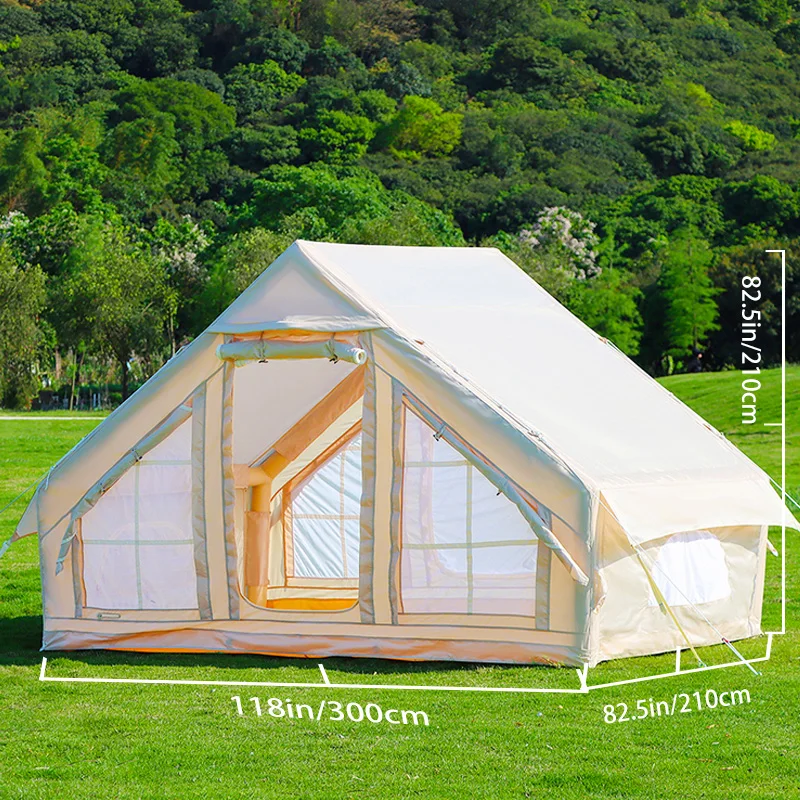
Pop-Up Tents: Ultimate Speed Champions
When absolute setup speed is your priority, pop-up tents stand unchallenged as the quickest option available. These ingeniously designed shelters deploy in seconds—literally unfolding themselves as soon as you release them from their carrying case.
How Pop-Up Technology Works
The magic behind pop-up tents lies in their pre-assembled, tension-loaded frame system. Flexible fiberglass or steel rods are permanently integrated into the tent fabric in a continuous loop. When packed, these rods are twisted and folded into a compact, flat circle that stores potential energy. Upon release, this energy transforms into immediate expansion, creating an instantly formed tent structure.
Key Advantages
- Unmatched setup speed: Deployment in 3-10 seconds—simply remove from the case and let physics do the work
- Lightweight design: Typically ranging from 4-8 pounds (1.8-3.6 kg), making them highly portable
- Affordability: Generally the most budget-friendly quick setup option
- Simplicity: No assembly knowledge required, perfect for camping novices
- Compact packed size: Many lightweight pop-up tent options fold into flat discs for easy transport
Limitations to Consider
- Size constraints: Most pop-up tents are limited to 2-person pop-up tents or 3-person maximum capacity
- Weather vulnerability: Generally less stable in strong winds and heavy rain than other tent types
- Folding challenges: The folding technique requires practice and can be frustrating for beginners
- Limited headroom: Typically feature low profile dome designs rather than vertical walls
- Durability concerns: Lighter materials and tension-loaded frames may have shorter lifespans
Ideal Use Scenarios
Pop-up tents excel in situations where speed and simplicity are paramount:
- Festival camping where rapid setup between venues is crucial
- Impromptu beach or park outings for quick shade
- Children’s backyard adventures
- Emergency shelter situations
- Solo or couple camping trips with minimal gear
The beauty of pop-up tents lies in their incredible convenience. For casual camping scenarios where extreme weather isn’t a concern, these speedy shelters offer unmatched setup efficiency—allowing you to spend less time preparing your accommodations and more time enjoying your surroundings.
Instant Cabin Tents: The Family-Friendly Solution
For family camping adventures where both space and setup simplicity are priorities, instant cabin tents offer an ideal middle-ground solution. These structures combine the vertical walls and generous headroom of traditional cabin tents with remarkably fast assembly systems.
The Hub and Pre-Attached Pole Innovation
Instant cabin tents utilize telescoping poles permanently attached to the tent body, connected by central hub mechanisms. This integrated framework allows the entire structure to expand and lock into position as a single unit. By eliminating the need to thread poles through sleeves or attach separate components, instant cabins deliver a dramatic reduction in setup complexity.
Key Advantages
- Impressive space-to-setup-time ratio: Establish a large family shelter in 1-5 minutes
- Standing room comfort: Most designs feature near-vertical walls and 6+ foot (1.8+ meter) center heights
- Multiple room configurations: Often include room dividers for privacy
- Excellent organization options: Typically offer abundant storage pockets and gear lofts
- Expanded capacity range: Available in sizes accommodating 4-10+ people
- Enhanced stability: More rigid frame construction than pop-up alternatives
Limitations to Consider
- Weight considerations: Typically range from 15-35 pounds (6.8-15.9 kg)
- Packed bulk: Require significant storage and transport space
- Price premium: Generally more expensive than similar-sized traditional tents
- Setup learning curve: While quick, the first setup often requires familiarization
- Wind vulnerability: Tall, straight walls can catch wind if not properly staked
Ideal Use Cases
Instant camping tents excel in these scenarios:
- Family campground stays with vehicle access
- Extended camping trips where comfort is a priority
- Base camp settings for multiple-day adventures
- Group camping situations requiring shared space
- Camping with young children where quick shelter establishment is valuable
The easy setup camping tents in this category have revolutionized family camping by eliminating the often-tedious tent assembly process that could consume valuable vacation time. For those prioritizing both livable space and setup convenience, instant cabin designs represent a compelling advancement in camping shelter technology.
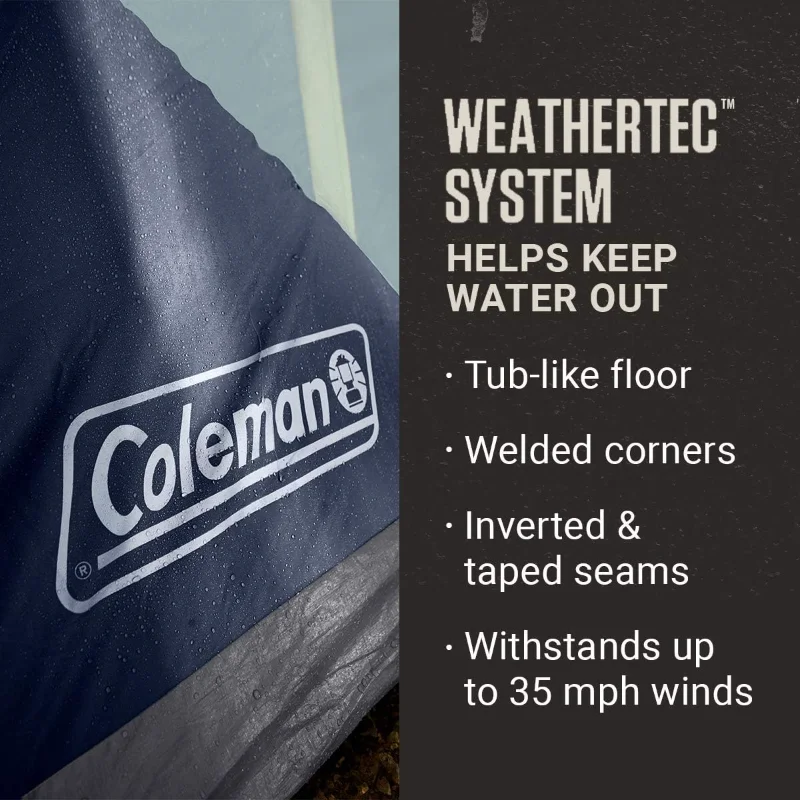
Inflatable Air Tents: Innovative Pole-Free Camping
The newest evolution in quick setup technology, inflatable air tents replace traditional rigid poles with air-filled beams to create a sturdy, pole-free structure. This innovation represents a significant departure from conventional tent design, offering unique advantages for campers seeking hassle-free setup combined with exceptional stability.
Air Beam Technology Explained
Inflatable tents utilize specially designed air chambers made from durable, airtight materials that, when pressurized, become remarkably rigid structural elements. These interconnected air beams create the tent’s framework through:
- High-pressure air chambers (typically operating at 7-9 PSI)
- Reinforced, multi-layered fabric construction to prevent punctures
- One-way valves allowing for quick inflation and controlled deflation
- Integrated pressure release systems to prevent over-inflation damage
Key Advantages
- No breakable poles: Eliminates a common failure point in traditional tents
- Superior wind stability: Flexible air beams can bend without breaking in strong winds
- Uniform tension: Creates a well-shaped, taut tent body
- Simplified setup: Single-point inflation systems in many models
- Excellent weatherproofing: Often features higher waterproof ratings
- Premium comfort features: Typically include enhanced ventilation and interior space
Limitations to Consider
- Pump dependency: Requires a pump (usually included) for setup
- Weight consideration: Generally heavier than pole tents, averaging 20-40 pounds (9.1-18.1 kg)
- Higher investment: Premium pricing compared to traditional designs
- Maintenance requirements: Valves and seams need regular inspection
- Puncture potential: Though rare with quality models, punctures require repair
Ideal Use Cases
Waterproof camping tents with inflatable technology excel in these scenarios:
- Extended campground stays where comfort is paramount
- Camping in variable or challenging weather conditions
- Family camping where setup simplicity is valued
- Adventures where broken poles would be a significant problem
- Situations where one person needs to set up a larger tent alone
Concerns about punctures are largely overblown for quality inflatable tents, which use multi-layered, reinforced materials similar to those in inflatable paddleboards and rafts. Most models include repair kits for emergency fixes, though punctures are uncommon with reasonable care.
The air beam technology continues to mature, with improvements in pump efficiency, beam structure, and material durability with each generation. For campers willing to make the initial investment, inflatable tents represent perhaps the most compelling balance of quick setup and structural integrity currently available.
Top Recommended Quick Setup Pop-Up Tents for 2025
After extensive testing across various environments and conditions, these pop-up tents stand out as the top performers in the category. Each balances the lightning-fast deployment pop-ups are known for with practical features for real-world camping.
Explore Elements SkySpring 2-Person Pop-Up
This ultralight option delivers exceptional performance for solo travelers or couples seeking the absolute fastest setup time with minimal weight penalty.
Key Specifications:
– Capacity: 2-person (comfortable for 1 person + gear)
– Weight: 4.2 lbs (1.9 kg)
– Packed dimensions: 24” diameter × 2” thick (61 cm × 5 cm)
– Set up dimensions: 82” × 48” × 38” height (208 cm × 122 cm × 96 cm)
– Materials: 68D polyester with 2000mm waterproof rating, YKK zippers
Setup Process: Removes from carrying case and self-deploys in approximately 3 seconds. Secure with included stakes for stability.
Standout Features:
– Dual-layer door with mesh for ventilation options
– Reinforced floor with 3000mm water rating
– Interior storage pockets and gear loft
– Pre-attached guy lines with reflective tracers
– Special UV-resistant coating for extended durability
Best For: Solo weekend campers, festival-goers, and backpackers prioritizing setup speed and simplicity.
Price Range: $$ (Mid-range)
Pros: Incredibly fast setup, surprisingly good ventilation, solid water resistance for a pop-up, exceptional portability.
Cons: Limited headroom, minimal vestibule space, requires practice to master folding technique.
Explore Elements Festival Pro 3-Person Waterproof Pop-Up Tent
This enhanced pop-up dome tent addresses the typical weather vulnerability of pop-ups with reinforced construction and superior waterproofing.
Key Specifications:
– Capacity: 3-person (comfortable for 2 adults + gear)
– Weight: 7.8 lbs (3.5 kg)
– Packed dimensions: 30” diameter × 3” thick (76 cm × 7.6 cm)
– Set up dimensions: 96” × 66” × 43” height (244 cm × 167 cm × 109 cm)
– Materials: 190T polyester with 3000mm waterproof rating, reinforced PU floor
Setup Process: Self-deploys in approximately 5 seconds, with color-coded stake points for quick securing.
Standout Features:
– Oversized rain fly with extended vestibule area
– Enhanced ventilation with four mesh windows
– Reinforced stake points with storm straps
– Double-stitched seams with waterproof tape
– Heat-reflective coating for temperature regulation
Best For: Festival campers, couples requiring extra space, and weekend adventures with unpredictable weather.
Price Range: $$$ (Premium)
Pros: Superior weather protection compared to typical pop-ups, excellent ventilation, quality materials that stand up to repeated use.
Cons: Heavier than most pop-ups, larger packed size, premium price point.
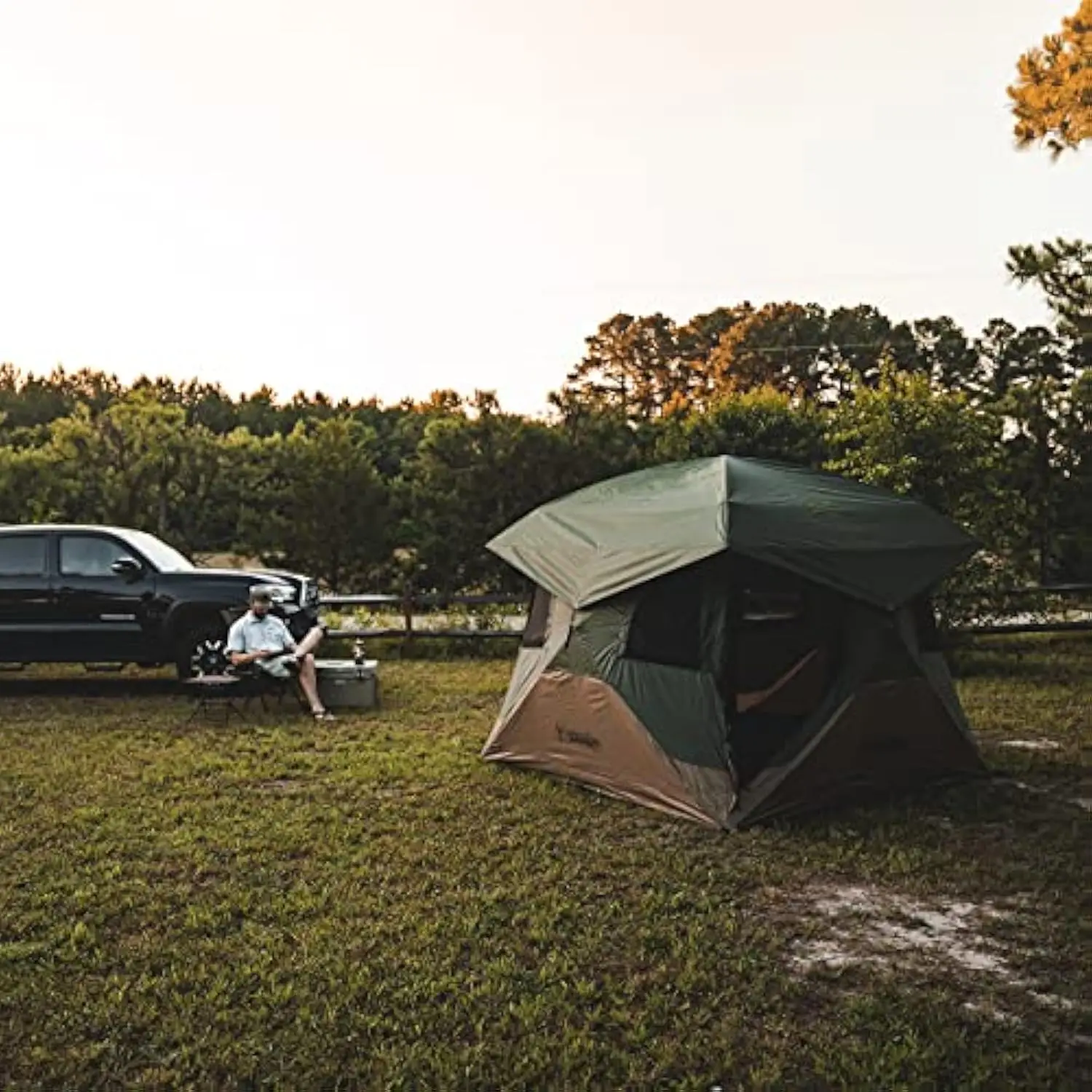
Top Recommended Instant Cabin Tents for 2025
For campers seeking the perfect balance between expansive interior space and setup simplicity, these instant cabin tents deliver exceptional performance across various camping scenarios.
Explore Elements SpeedHome 6-Person Instant Cabin
This flagship instant cabin balances generous family space with remarkably quick assembly, making it ideal for extended campground stays.
Key Specifications:
– Capacity: 6-person (comfortable for 4 adults with gear)
– Weight: 24.5 lbs (11.1 kg)
– Packed dimensions: 48” × 12” × 12” (122 cm × 30 cm × 30 cm)
– Set up dimensions: 10’ × 9’ × 6‘7” center height (305 cm × 274 cm × 200 cm)
– Materials: 150D polyester with 3000mm waterproof coating, steel/fiberglass frame
Setup Process: Unfold, extend telescoping poles, and lock hub points—typically complete in under 2 minutes for experienced users.
Standout Features:
– Room divider creating separate sleeping and living areas
– Extended awning over front door for protected entry
– Panoramic windows with adjustable privacy panels
– Integrated E-port for electrical cord access
– Enhanced ventilation system with ground and ceiling vents
– Heavy-duty carry bag with compression straps and wheels
Best For: Family campground stays, extended camping trips, and base camp for multi-day adventures.
Price Range: $$$ (Premium)
Pros: Exceptional space-to-setup-time ratio, standing room throughout, excellent organization options, superior weather protection.
Cons: Bulky when packed, requires two people for optimal setup, premium price point.
Explore Elements WeekendEscape 4-Person Instant Tent
This mid-sized best instant tent offers an excellent compromise between portability and living space, perfect for shorter trips and smaller groups.
Key Specifications:
– Capacity: 4-person (comfortable for 2-3 people with gear)
– Weight: 16.8 lbs (7.6 kg)
– Packed dimensions: 40” × 10” × 10” (102 cm × 25 cm × 25 cm)
– Set up dimensions: 8’ × 7’ × 5‘10” center height (244 cm × 213 cm × 178 cm)
– Materials: 68D polyester with 2500mm waterproof rating, steel/aluminum hybrid frame
Setup Process: Extends from compact form to full setup in approximately 90 seconds for a single person.
Standout Features:
– Dark room technology blocks 90% of sunlight for better sleep
– Bathtub-style floor with sealed seams
– Mesh ceiling for improved airflow and stargazing
– Internal gear loft and side storage pockets
– Reflective guy lines for nighttime visibility
Best For: Weekend getaways, small family camping, and campers wanting simplicity without sacrificing comfort.
Price Range: $$ (Mid-range)
Pros: Excellent balance of weight and space, impressive weather resistance, dark room technology for sleeping late, manageable by a single person.
Cons: Limited standing space around edges, condensation management requires attention to venting.
Top Recommended Inflatable Air Tents for 2025
Inflatable tent technology continues to evolve rapidly, with these top models delivering exceptional performance that balances quick setup with outstanding stability and comfort.
Explore Elements AirLodge 4-Person Inflatable Tent
This premium inflatable option showcases the potential of air beam technology with its impressive structural stability and refined inflation system.
Key Specifications:
– Capacity: 4-person (spacious for 3 adults with gear)
– Weight: 22.5 lbs (10.2 kg)
– Packed dimensions: 27” × 16” × 16” (69 cm × 41 cm × 41 cm)
– Set up dimensions: 12’ × 8.5’ × 6.5’ center height (366 cm × 259 cm × 198 cm)
– Materials: 150D polyester oxford with 4000mm waterproof rating, TPU air beams
Inflation Process: Single-point inflation system using included dual-action pump, complete in approximately 6 minutes. Automatic pressure control prevents over-inflation.
Standout Features:
– Interconnected air beam structure provides superior wind stability
– Separate sleeping pods with blackout technology
– Extended front vestibule with multiple configuration options
– Reinforced valve design with easy-access maintenance ports
– Multi-point ventilation system for excellent airflow control
– Included repair kit and pressure gauge
Best For: Extended camping trips, family adventures, and camping in variable weather conditions.
Price Range: $$$$ (Premium Plus)
Pros: Exceptional stability in wind, spacious livable design, superior weather protection, high-quality construction that justifies the investment.
Cons: Premium pricing, requires dedicated pump, heavier than pole alternatives, larger packed size.
Explore Elements BreezeCliff 3-Person Inflatable Tent
This more compact inflatable option provides the benefits of air beam technology in a lighter, more manageable package for weekend adventurers.
Key Specifications:
– Capacity: 3-person (ideal for 2 adults + gear)
– Weight: 18.2 lbs (8.3 kg)
– Packed dimensions: 24” × 14” × 14” (61 cm × 36 cm × 36 cm)
– Set up dimensions: 10.5’ × 7’ × 5.9’ center height (320 cm × 213 cm × 180 cm)
– Materials: 75D ripstop polyester with 3000mm waterproof rating, TPU air beams
Inflation Process: Multi-valve system inflates in sections using included high-flow hand pump, complete in approximately 5 minutes.
Standout Features:
– Lightweight TPU air beams reduce overall tent weight
– Pre-angled beam design maximizes internal volume
– Large front awning converts to additional sheltered space
– Reflective guylines and stake points
– Oversized windows with rain protection hoods
– Quick-release valves for rapid takedown
Best For: Weekend camping, couple adventures, and situations where one person might set up camp alone.
Price Range: $$$ (Premium)
Pros: Excellent balance of weight and stability, simplified setup for solo campers, superior ventilation design, quality construction.
Cons: Multiple inflation points require more time than single-point systems, mid-level premium pricing.
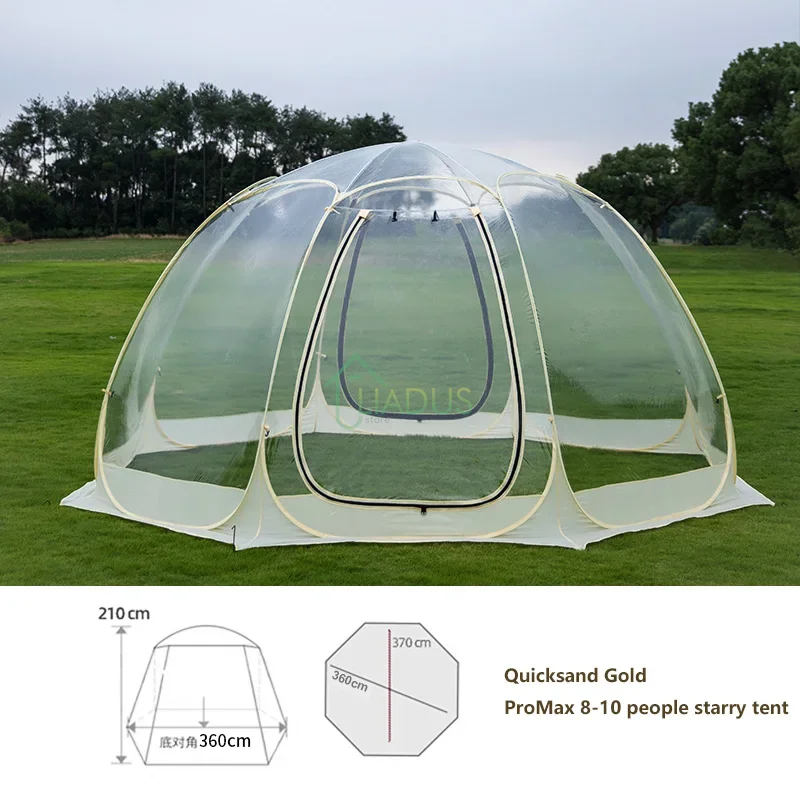
Comparative Overview: Quick Setup Options at a Glance
To help you quickly compare the key attributes of our recommended quick setup tents, we’ve compiled this comprehensive comparison table. This side-by-side analysis highlights the critical differences between models to aid your decision-making process.
| Tent Model | Tent Type | Setup Time | Capacity | Weight | Packed Size | Weather Rating | Price | Best Use |
|---|---|---|---|---|---|---|---|---|
| SkySpring 2P | Pop-Up | 3 seconds | 2 Person | 4.2 lbs (1.9 kg) | 24” dia. × 2” (61×5 cm) | ★★★☆☆ | $$ | Solo/Festival |
| Festival Pro 3P | Pop-Up | 5 seconds | 3 Person | 7.8 lbs (3.5 kg) | 30” dia. × 3” (76×7.6 cm) | ★★★★☆ | $$$ | Festival/Couples |
| WeekendEscape 4P | Instant Cabin | 90 seconds | 4 Person | 16.8 lbs (7.6 kg) | 40”×10”×10” (102×25×25 cm) | ★★★★☆ | $$ | Weekend Trips |
| SpeedHome 6P | Instant Cabin | 120 seconds | 6 Person | 24.5 lbs (11.1 kg) | 48”×12”×12” (122×30×30 cm) | ★★★★★ | $$$ | Family Camping |
| BreezeCliff 3P | Inflatable | 5 minutes | 3 Person | 18.2 lbs (8.3 kg) | 24”×14”×14” (61×36×36 cm) | ★★★★☆ | $$$ | Weekend Trips |
| AirLodge 4P | Inflatable | 6 minutes | 4 Person | 22.5 lbs (10.2 kg) | 27”×16”×16” (69×41×41 cm) | ★★★★★ | $$$$ | Extended Trips |
While pop-up tents clearly dominate in setup speed, they generally offer less weather protection and interior space compared to instant cabin and inflatable options. The instant tent options for couples like the SkySpring represent the ultimate in convenience, while larger family models like the SpeedHome balance quick setup with significant living space.
Weather ratings consider both water resistance (hydrostatic head rating) and wind stability, with five-star options suitable for more challenging conditions. Price categories range from $ (budget) to $$$$ (premium plus), reflecting both materials quality and feature sophistication.
Your ideal choice depends largely on your camping priorities—whether you value absolute setup speed, interior space, weather resistance, or portability. The next section will guide you through this decision-making process based on your specific needs.
Compact Backpacking Tent, Lightweight Backpacking Tent, Waterproof Camping Tent
$335.52 Select options This product has multiple variants. The options may be chosen on the product pageCamping Tent with Vestibule, Waterproof Camping Tent
Price range: $407.89 through $479.48 Select options This product has multiple variants. The options may be chosen on the product pageBackpacking Tent with Vestibule, Trekking Pole Backpacking Tent, Waterproof Camping Tent
Price range: $271.99 through $519.52 Select options This product has multiple variants. The options may be chosen on the product pageEasy Setup Camping Tent, Instant Camping Tent
Instant Cabin Tent Double Layer Canvas 1-Minute Setup Spacious Family Camping Shelter with Air Vents$308.10 Select options This product has multiple variants. The options may be chosen on the product page
How to Choose: Your Quick Setup Tent Buying Guide
Selecting the ideal quick setup tent requires balancing several key factors based on your specific camping needs and priorities. This framework will guide you through the decision-making process to find your perfect match.
1. Match Tent Type to Your Camping Style
Begin by honestly assessing your camping habits and preferences:
- Weekend Warriors: Pop-up or smaller instant cabin tents offer the best balance of convenience and comfort for 1-3 night trips.
- Family Campers: Larger instant cabins or inflatable tents provide the space and comfort features necessary for extended family stays.
- Festival-Goers: Ultra-fast pop-up models prioritize deployment speed and simple packing for frequent site changes.
- Adventure Campers: Consider weather resistance and durability if you’ll face challenging conditions.
- Car Campers vs. Hikers: Weight becomes critical if you’ll carry your shelter any significant distance.
2. Understand True Setup Time Expectations
Manufacturer claims often represent optimal conditions with experienced users. For realistic planning:
- Add 50-100% to listed setup times for your first few uses
- Pop-up tents: 3-10 seconds to deploy, but 5-10 minutes to properly stake
- Instant cabin tents: 1-3 minutes to erect frame, plus 5-10 minutes for complete setup with rainfly and stakes
- Inflatable tents: 5-8 minutes for inflation, plus 5-10 minutes for complete setup and securing
3. Decoding Capacity Ratings Realistically
Tent capacity ratings typically represent a tight fit with minimal gear. For comfortable camping:
- Solo campers: Choose a 2-person tent
- Couples: Select a 3-person tent
- Families of four: Consider 6-person models for comfortable living space
- Account for gear storage needs, especially for longer trips
4. Weather Resistance Considerations
Water resistance is measured in millimeters of hydrostatic head (HH), indicating how much water pressure the fabric can withstand:
- Minimal protection: 1000mm HH
- Decent rain protection: 1500-2000mm HH
- Strong weather protection: 3000mm+ HH
- Critical areas like floors should have higher ratings than walls/rainfly
Wind stability varies significantly by design:
- Pop-up tents: Generally least wind-resistant
- Instant cabin tents: Vertical walls catch more wind but frames are sturdy
- Inflatable tents: Often surprisingly stable as they can flex without breaking
5. Material and Construction Quality Indicators
Look for these quality signals when evaluating options:
- Fabric density (higher denier numbers indicate thicker, more durable materials)
- Reinforced stress points and double-stitched seams
- Quality zippers (YKK is the gold standard)
- Taped or welded seams for waterproofing
- UV-resistant materials if you camp in sunny conditions
- Aluminum components generally outperform fiberglass for longevity
6. Weight and Packed Size Reality Check
Consider the practical aspects of transport and storage:
- Will you carry it far from your vehicle?
- Do you have limited storage space at home?
- Will it fit in your vehicle alongside other camping gear?
- Remember that pitch perfect stress-free tents should make your entire camping experience easier, not just the setup portion.
7. Ventilation Requirements
Proper airflow prevents condensation, a common issue in quick setup tents:
- Look for multiple mesh panels or windows
- Check for ground vents that create vertical airflow
- Consider adjustable venting options for weather flexibility
- Higher sleeping capacity means greater need for ventilation
8. Additional Features Worth Considering
Based on your camping style, prioritize features that enhance your experience:
- Vestibule areas for gear storage
- Interior organization pockets
- Electrical cord access ports
- Room dividers for privacy
- Blackout or dark-room technology for better sleep
- Footprint inclusion for ground protection
9. Budget Considerations
Quick setup tents typically command price premiums over traditional designs. General price brackets:
- Pop-up tents: $80-200
- Instant cabin tents: $150-500+ depending on size
- Inflatable tents: $250-800+ depending on size and features
Higher prices generally reflect better materials, more advanced features, and longer expected lifespan. The quick assembly tents guide can help you navigate these options based on your budget.
Remember that the “best” tent is the one that matches your specific camping needs, not necessarily the most expensive or feature-rich option. By prioritizing the factors most important to your outdoor adventures, you’ll find a quick setup tent that enhances your connection with nature rather than complicating it.
Setup and Maintenance: Getting the Most From Your Quick Setup Tent
While quick setup tents simplify the camping experience, proper setup techniques and maintenance practices can significantly extend their lifespan and performance. Follow these guidelines to maximize your investment.
First-Time Setup Best Practices
Before heading out on your first camping trip:
- Practice setup at home in daylight and good weather conditions
- Familiarize yourself with all components and their functions
- Time your setup to set realistic expectations
- Identify any manufacturing defects while returns are still possible
- Watch manufacturer videos for model-specific guidance on how to pitch instant tents
Site Selection Strategies
Choosing the right tent location dramatically impacts your experience:
- Select level ground free from rocks, roots, and sharp objects
- Avoid low-lying areas where water might collect
- Consider sun exposure based on when you want to wake up
- Position the door away from prevailing winds
- Leave adequate distance from fire pits to prevent spark damage
- Use a footprint or ground cloth to protect your tent floor
Type-Specific Setup Tips
Pop-Up Tents
- Remove from carrying case carefully to control the deployment
- Immediately stake down corners after popping up, especially in wind
- Master the folding technique (usually involves twisting into a figure-eight)
- Practice folding repeatedly—it becomes easier with experience
Instant Cabin Tents
- Extend legs partially before raising roof to reduce strain on connections
- Lock hub points securely, confirming proper engagement
- Extend legs fully only after basic structure is established
- Attach rainfly before fully staking out if rain is possible
Inflatable Tents
- Clear setup area thoroughly to avoid punctures
- Inflate to approximately 80% before aligning doors and windows
- Achieve final pressure only after basic positioning is complete
- Use the pressure gauge provided by the manufacturer
- Close valves immediately after inflation to prevent pressure loss
Essential Maintenance for Longevity
Cleaning Guidelines
- Brush off dirt regularly during use
- Clean with mild soap and water, never harsh detergents
- Address stains promptly before they set in
- Remove tree sap with alcohol-based hand sanitizer
- Clean zippers with soft brush to remove grit
Drying and Storage Recommendations
- Never pack your tent wet (mildew can form in 24-48 hours)
- If forced to pack wet, unpack and dry within a day
- Dry completely in indirect sunlight
- Store loosely in storage sack in cool, dry place
- Avoid compression during long-term storage
Common Wear Points to Monitor
- Floor corners and edges
- Door zippers and mesh panels
- Seam tape and sealed areas
- Guy line attachment points
- Pole hinge points (instant tents)
- Valve areas (inflatable tents)
Type-Specific Maintenance
- Pop-up tents: Periodically check tension in the spring framework
- Instant tents: Lubricate hub mechanisms yearly with silicone spray
- Inflatable tents: Check valve seals regularly, store with valves open
With proper care and maintenance, a quality quick setup tent can provide many seasons of reliable service. The time invested in proper setup and maintenance pays dividends in improved camping experiences and delayed replacement costs.
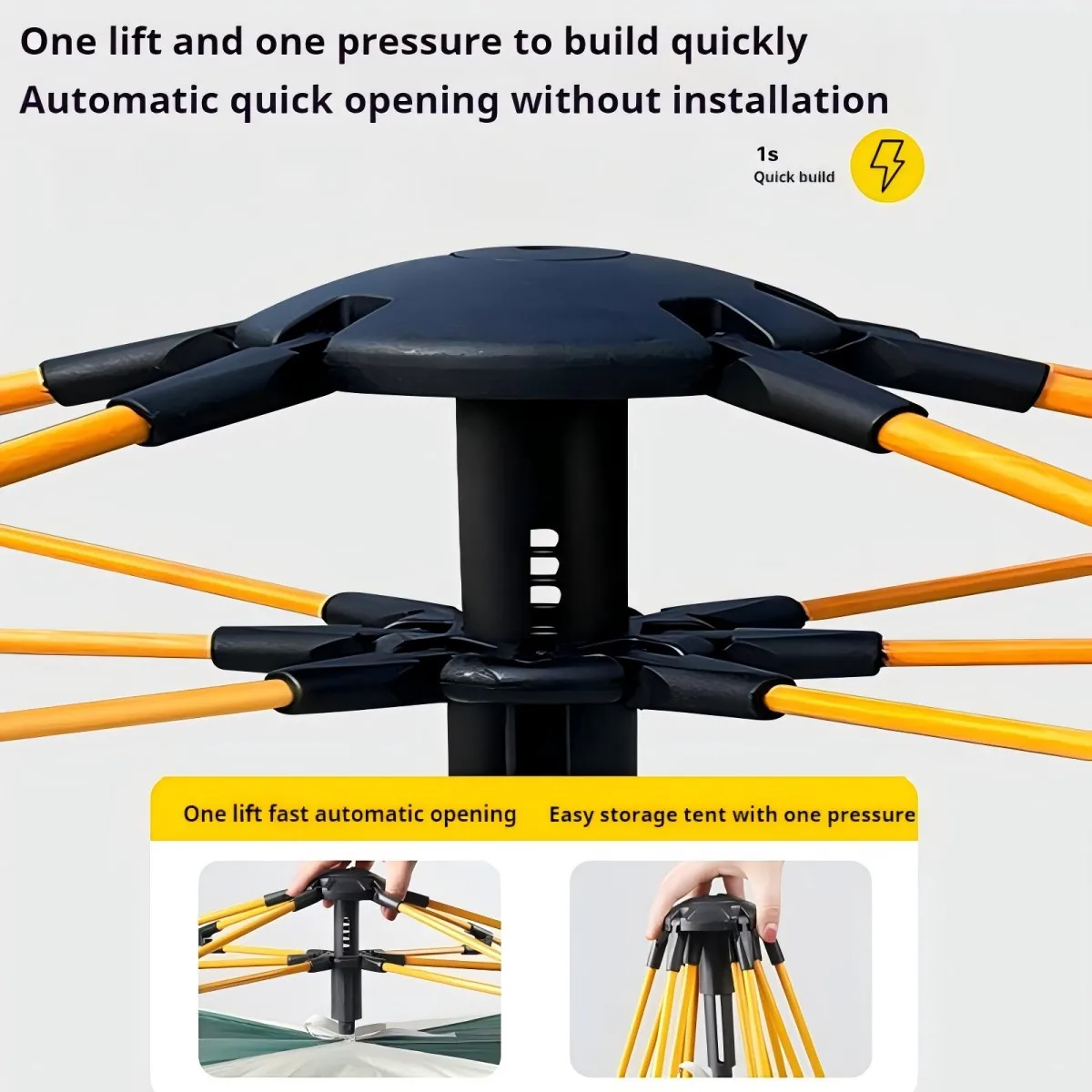
Addressing Common Questions About Quick Setup Tents
As quick setup tents continue gaining popularity, many campers have questions about their performance compared to traditional designs. Here are straightforward answers to the most common concerns:
How durable are quick setup tents compared to traditional tents?
The durability of durable tents all seasons depends primarily on materials and construction quality rather than the setup mechanism. High-quality quick setup tents can match or exceed the lifespan of traditional models, often lasting 5-7 years with proper care. However, budget quick setup options typically sacrifice material quality for convenience and may have shorter lifespans.
Key durability factors include:
– Fabric denier (higher numbers indicate stronger materials)
– Pole/frame materials (aluminum generally outperforms fiberglass)
– Quality of connection points and high-stress areas
– UV resistance for tents frequently used in sunny conditions
Can quick setup tents really handle serious weather?
Yes, but with important considerations. Premium instant cabin and inflatable models often feature weather resistance comparable to traditional tents. However, most pop-up tents trade weather performance for setup speed.
Weather capability varies by type:
– Pop-up tents: Generally suitable for fair weather camping only
– Instant cabin tents: Mid-range to excellent weather resistance depending on quality
– Inflatable tents: Often superior wind performance as they flex rather than break
Look for hydrostatic head ratings of 3000mm+ for serious rain protection.
Is takedown time comparable to setup time?
Generally no. Most quick setup tents take significantly longer to pack than to deploy:
– Pop-up tents: 3-5 seconds to deploy, 2-5 minutes to fold correctly
– Instant cabin tents: 1-3 minutes to deploy, 5-10 minutes to pack
– Inflatable tents: 5-8 minutes to inflate, 10-15 minutes to deflate and pack
Mastering the proper folding technique dramatically improves the takedown experience, especially for pop-up models.
What happens if something breaks on a quick setup tent?
Repair options vary by type:
– Pop-up tents: Spring frame damage is challenging to repair and often requires replacement
– Instant cabin tents: Hub systems can sometimes be replaced, and pole sections repaired
– Inflatable tents: Include repair kits for small punctures; valve replacements available
Many manufacturers offer replacement parts for premium models, though availability varies by brand. Always check warranty terms before purchasing.
Are quick setup tents really worth the extra cost?
Value depends on your priorities:
– High value if: you camp frequently, setup simplicity is important, you camp alone, or you have limited patience/physical ability
– Lower value if: you rarely camp, have plenty of setup help, or are extremely budget-conscious
The convenience premium typically ranges from 20-50% above comparable traditional tents.
How do these tents perform in different seasons?
Seasonal performance varies considerably:
– Summer camping: Most quick setup options perform well
– Shoulder seasons (spring/fall): Better-quality instant and inflatable models handle temperature variations
– Winter: Few quick setup options are designed for true winter conditions; specialized 4-season tents are recommended
Three-season capability is common in mid to premium ranges, but always check specific season ratings.
Can one person really set up the larger models?
Yes, with some limitations:
– Pop-up tents: Single-person setup is straightforward for all sizes
– Instant cabin tents: One person can manage up to about 6-person capacity, though larger models are easier with help
– Inflatable tents: Single inflation point models are quite manageable solo, even in larger sizes
Wind conditions significantly impact solo setup difficulty for all tent types.
Our Testing Methodology and Expertise
The recommendations and insights shared throughout this guide are based on a rigorous testing and evaluation process designed to reflect real-world camping conditions and needs.
Evaluation Framework
Our assessment employs a comprehensive methodology focusing on key performance attributes:
- Setup Speed: Timed trials with both experienced campers and novices
- Weather Resistance: Performance testing in controlled rain scenarios and wind simulation
- Durability: Accelerated use testing and material stress analysis
- Comfort & Livability: Space-to-weight analysis and interior feature evaluation
- Value Assessment: Price-to-performance ratio across comparable models
Testing Environments
To ensure our recommendations perform across diverse camping scenarios, testing occurs in multiple environments:
- Established campgrounds with standard amenities
- Primitive backcountry sites with challenging terrain
- Weather-variable conditions including light precipitation
- Temperature ranges from 40°F to 90°F (4°C to 32°C)
Comparative Analysis
Each tent undergoes direct comparison with both traditional models and other quick setup options in its category. This comparative approach provides context for understanding the true advantages and limitations of each design.
Professional testing methodologies from established outdoor equipment evaluation protocols inform our approach, similar to those employed by reputable outdoor publications and gear testing organizations. For additional information on testing standards, the Outdoor Life tent testing program offers valuable insights into industry methodologies.
Our evaluations prioritize practical performance over marketing claims, focusing on attributes that genuinely enhance the camping experience. We acknowledge that perfect tent designs don’t exist—each involves compromises between competing factors like weight, space, durability, and cost.
Quick Setup Tents for Specific Camping Scenarios
Different camping situations demand specific features from your shelter. Here’s how to match quick setup tent types to particular camping scenarios for the best experience.
Family Camping with Young Children
For family adventures with little ones, prioritize:
- Recommended Type: Large instant cabin tents
- Key Features: Room dividers for sleeping privacy, generous headroom for changing clothes, organized storage to keep essentials accessible
- Why It Works: The quick setup allows you to attend to children while establishing camp, interior space accommodates pack-and-plays or child sleeping arrangements, and vertical walls maximize usable space
The Explore Elements SpeedHome 6-Person combines these family-friendly features with a setup time brief enough to manage even with impatient young campers.
Solo Adventurers and Minimalists
For those traveling light and independently:
- Recommended Type: Lightweight pop-up or small instant tents
- Key Features: Minimal weight, compact packed size, single-person setup capability
- Why It Works: When camping alone, handling complex tent assembly can be challenging; easy setup tents for weekend camping eliminate this struggle while keeping your load manageable
The SkySpring 2-Person Pop-Up provides the perfect balance of quick deployment and portability for solo adventurers who value simplicity.
Festival and Event Camping
For music festivals and temporary event camping:
- Recommended Type: Pop-up tents with distinctive appearance
- Key Features: Ultra-fast setup/takedown, visibility for finding your tent in vast camping areas, basic weather protection
- Why It Works: When moving between venues or arriving after dark, the seconds-long deployment proves invaluable; distinctive colors or patterns help locate your tent among hundreds of others
The Festival Pro 3-Person Pop-Up excels in these environments with its instant setup and visibility features.
Weather-Challenged Environments
For camping in regions prone to rain or wind:
- Recommended Type: Premium inflatable tents or well-staked instant cabins
- Key Features: Higher hydrostatic head ratings (4000mm+), quality storm guy lines, protected ventilation options
- Why It Works: Superior stability handles unexpected weather changes; quick setup means less exposure during assembly in rain
The AirLodge 4-Person Inflatable offers exceptional weather performance while maintaining setup convenience.
Travel and Portability Focus
For campers needing to transport their shelter efficiently:
- Recommended Type: Compact pop-up or smaller instant tents
- Key Features: Lightweight design, small packed dimensions, carrying case quality
- Why It Works: Best quick pitch tents for travelers combine setup efficiency with transport-friendly dimensions
The BreezeCliff 3-Person provides an excellent balance between setup speed and portability for those with limited vehicle space or air travel considerations.
Extended Stay Basecamps
For longer camping trips where comfort becomes paramount:
- Recommended Type: Large instant cabin or inflatable tents
- Key Features: Standing height throughout, weather durability, enhanced ventilation, multiple rooms or defined spaces
- Why It Works: The initial setup efficiency pays dividends throughout an extended stay; comfort features become increasingly important as days pass
The SpeedHome 6-Person Instant Cabin creates a true “home away from home” for extended outdoor living.
By matching your tent type to your specific camping scenario, you’ll maximize both convenience and enjoyment. The perfect quick setup tent isn’t necessarily the fastest or the largest—it’s the one that best addresses the unique requirements of your outdoor adventures.

